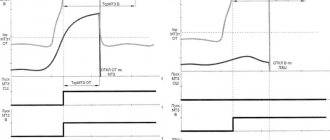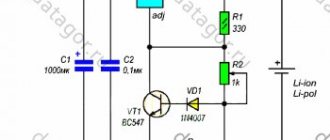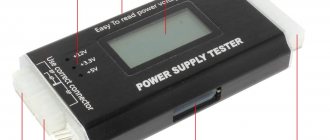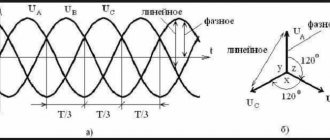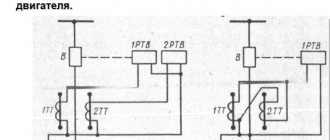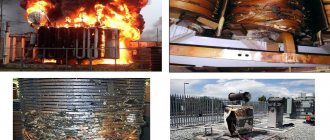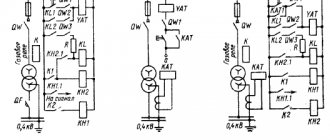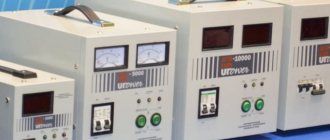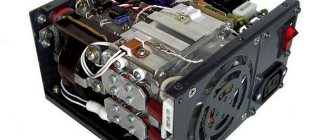What is IP67?
IP (Ingress Protection rating) - standards for protecting the housing of any electrical equipment from the harmful effects of various environmental factors.
Depending on the level of security of the smartphone, the IP is assigned a two-digit number, in this case “67”. The first digit (from 0 to 6) determines the device’s ability to block all kinds of solid objects (dust, sand) of different sizes, from 50 mm to 1 mm or less. IP6 – our device is completely dustproof. The second number (from 0 to) sets the degree of water resistance of the gadget. And here some nuances await us. When many people hear the word water resistance, they understand complete protection from water, and some dream of being able to shoot from a smartphone at great depths. This is not so. The IP67 standard will protect Our device is only resistant to partial or short-term immersion in water to a depth of no more than 1 meter.
Unfortunately, nowadays, the substitution of the terms “water resistance” and “water resistance” is used for marketing purposes, although the concepts are different. So you shouldn’t unquestioningly believe advertising - you need to look at the prescribed IP standard and find detailed information on it.
Thus, a smartphone with IP67 protection will be completely resistant to sand, dust and other small things, as well as short “dives” to a depth of 1 meter. One of the most famous representatives of such protection is the Samsung Galaxy S7. More budget options include Alcatel OneTouch Go Play 7048X and Blackview BV5000 with powerful batteries and 5-inch displays.
Of course, with such gadgets it will not be possible to conduct underwater photography, but spilled water and rainy weather on the gadget will not damage the smartphone.
What is IP
IP – abbreviation and decoding for “International Protection Marking”, which roughly translates as “international security assessment”. This is a method of classifying the protection of the contents of a device by its shell and case from the penetration of moisture and small particles (various types of dust, including wood, plastic, metal, sand) from the environment.
Until recently, the most secure device was a device marked IP68 - a completely dust- and moisture-proof shell that can withstand prolonged immersion in water to a depth of several meters. Now a more aggressive standard has appeared - IP69-K. The housing not only does not allow dust to pass through, but will also withstand prolonged immersion in hot water under pressure.
What are IP standards?
The International Electrotechnical Commission (IEC) has created the IP (Ingress Protection Rating) as a standard that determines the degree of protection of electronic devices from moisture and solid materials. Essentially, the IP rating system functions as a strength scale, and its numbering system indicates a device's resistance to various elements.
IP is expressed as a two-digit number XX. The first number refers to the protection of gadgets from solid objects, and the range varies from 0 to 6. The second number refers to resistance to water and is indicated by numbers from 0 to 8. The higher the number, the higher the protection.
It is important to note that the degree of protection is assigned to the device not by the manufacturer itself, but by experts who conduct independent testing. To check the level of protection and assign one of the IP classes, experts use dust chambers with talc, as well as spray guns and water tanks. In the modern classification, there are 7 levels of protection of devices from solid objects and 9 levels of protection from water.
Protection against solid objects:
- 0 – no protection;
- 1 – protection against ingress of solid objects less than 50 mm in size;
- 2 – protection against ingress of solid objects less than 12.5 mm in size;
- 3 – protection against ingress of solid objects less than 2.5 mm in size;
- 4 - protection against ingress of solid objects less than 1 mm in size;
- 5-part protection against dust. Microparticles of dust entering the device will not harm it;
- 6 – absolute protection from dust.
Water protection:
- 0 – no protection;
- 1 – protection against vertical drops;
- 2 – protection from drops falling on the device at an angle of up to 15°;
- 3 – protection against drops falling on the device at an angle of up to 60°;
- 4 – protection from splashes and drops from all sides;
- 5 – protection against low-pressure water jets hitting the device for 3 minutes;
- 6 – protection against jets of water with strong pressure hitting the device for 3 minutes;
- 7 – protection from water when the device is immersed to a depth of 1 m for 30 minutes;
- 8 – protection from water when the device is immersed to a depth of 1.5 m for 30 minutes.
IP Certification
IP certification is awarded to tested gadgets through independent testing by accredited agents. For tests, dust chambers with talc, spray bottles and water tanks are used. Based on the results of the experiments, devices receive a certificate with a two-digit number after the IP prefix. The first number in it indicates resistance to penetration of dust and microparticles:
- IP0X - no protection against dust is provided;
- IP1X - protection against penetration of solid objects larger than 50 mm into the structure;
- IP2X - protection against solid objects with a diameter of more than 12 mm;
- IP3X - objects with a diameter of more than 2.5 mm cannot enter the structure;
- IP4X - the design does not allow objects with a diameter of more than 1 mm to enter;
- IP5X - reduced likelihood of dust penetrating into the structure (it can get there in small quantities, but will not harm the device);
- IP6X - absolutely dustproof.
| With IP68 protection, you can safely swim in the pool. |
The second digit in the IP marking has much more weight - it is it that describes the water resistance of the device under test:
- IPX0 - no moisture protection;
- IPX1 - protection against vertically falling droplets of water;
- IPX2 - splash protection with a deflection angle of up to 15° vertically;
- IPX3 - splash protection with a deflection angle of up to 60° vertically;
- IPX4 - protection against splashing water from any direction;
- IPX5 - protection against water flows from any direction;
- IPX6 - protection against exposure to powerful jets of water;
- IPX7 - protection from full or partial short-term immersion under water (to a depth of 1 meter for 30 minutes);
- IPX8 - protection for prolonged immersion under water to a depth of more than 1 meter.
Important! If a device is tested for only one parameter, one of the numbers is not indicated in the certification - the symbol “X” is placed instead. Hence the entries in the form of IPX7. Smartphones with IP68 protection level from RUR 41,570. Apple iPhone 11 128GBfrom RUR 39,770 Apple iPhone 11 64GBfrom RUR 61,690 Apple iPhone 12 128GBfrom RUR 74,150 Apple iPhone 12 Pro 128GBfrom RUR 55,570 Apple iPhone 12 64GBfrom RUR 35,700 Samsung Galaxy S20 FE 128GB/6GBfrom RUR 81,800 Apple iPhone 12 Pro Max 128GBfrom RUR 48,190 Apple iPhone 12 mini 64GBfrom RUR 54,250 Samsung Galaxy S21 128GBfrom RUR 32,895 Samsung Galaxy S10 Plus 128GBfrom RUR 58,980 Apple iPhone 11 Pro 256GBfrom RUR 51,980 Apple iPhone 11 Pro 64GBfrom RUR 88,850 Apple iPhone 12 Pro Max 256GBfrom RUR 55,390 Apple iPhone 12 mini 128GBfrom RUR 28,985 Samsung Galaxy S10 128GBfrom RUR 57,599 OnePlus 9 Pro 256GB/12GBfrom RUR 26,863 Apple iPhone Xs 64GBfrom RUR 55,950 Samsung Galaxy S21 256GBfrom RUR 28,448 Sony Xperia 10 IIIfrom RUB 78,350 Samsung Galaxy S21 Ultra 256GB
Electronic devices with a seven or eight at the “tip of the tail” of the IP prefix are considered completely waterproof. In fact, it is often assumed that gadgets marked IP67 are not afraid of short-term immersions, and those marked IP68 can withstand long-term immersion to greater depths. Specific restrictions on depth and duration of stay under water must be clarified in the official documentation for the device.
A separate story in this marking is the IP69K label. It is assigned to housings of products that can withstand high-temperature pressure washing. Those. hot jets of water under strong pressure. In practice, such capabilities can be useful for people whose activities involve extreme conditions - rescuers, firefighters, military personnel, etc. But for ordinary underwater use, it hardly makes sense to purchase such a device - the IP68 protection level is quite sufficient for this.
| The procedure for obtaining the IP69K certificate involves high-temperature pressure washing of the tested gadget. |
The IP dust and moisture resistance index is assigned to smartphones, smart watches and fitness bracelets, portable audio speakers, laptops, action cameras and other electronics.
Mobile phones with IP69 protection level from RUB 17,840. Doogee S88 Profrom RUR 18,950 Blackview BV9100from RUR 19,840 Doogee S88 Plusfrom RUR 21,260 Blackview BV9900Efrom RUR 13,470 Blackview BV5100 128GBfrom RUR 13,490 Blackview BV6300 Profrom RUR 13,234 Doogee S59 Profrom RUR 19,820 Doogee S96 Profrom RUR 11,900 Oukitel F150 Bison 2021from RUR 15,800 Doogee S86from RUR 26,590 Blackview BV9800 Profrom RUR 30,990 Blackview BV9900 Profrom RUR 12,370 Blackview BV6600from RUR 16,420 Doogee S86 Profrom RUR 8,940 UleFone Armor X5from RUR 8,450 Oukitel WP12from RUR 28,940 Oukitel WP10from 9,850 rub. UleFone Armor X5 Profrom RUR 9,660 Blackview BV6300from RUR 22,160 UleFone Armor 7
American military standard MIL-STD-810 and its variations
Nowadays, in the specifications of smartphones and other electronic devices, certification according to the MIL-STD-810 standard (with the letters G and H at the end) is increasingly found. It establishes certain levels of protection of electrical equipment from environmental factors. Initially, stress resistance tests were carried out on those devices that were supplied to the US Army. Hence the strict requirements for the equipment being tested.
The first version of the standard was introduced by the US Department of Defense in 1962. Over the years it has undergone many changes. Each new version of the standard is indicated by a letter of the Latin alphabet at the end. And the further the letter in the alphabet, the more modern the version of the certificate. Thus, since the end of 2008, the MIL-STD-810G specification has been in force, and in 2022, a version of the MIL-STD-810H standard was approved.
| Initially, equipment for the US Army was tested according to the MIL-STD-810 standard. |
Equipment tested to meet US military standard protection standards simulates real-life challenges that may be encountered on the job. The level of resistance of the product to impacts during falls and shakes is checked, vibration tests are carried out, and the operation of the device is tested in a wide temperature range, in the rain, in fog, under the influence of sand, dust, etc. MIL-STD-810 and its specifications cover the most extensive set of environmental tests available.
Smartphones with MIL-STD-810 protection standard from RUB 17,840. Doogee S88 Profrom RUR 19,840 Doogee S88 Plusfrom RUR 7,975 Sony Xperia Z5 Compactfrom RUR 21,260 Blackview BV9900Efrom RUR 13,470 Blackview BV5100 128GBfrom 9,610 RUR Blackview BV4900 Profrom RUR 20,220 Oukitel WP7from RUR 13,490 Blackview BV6300 Profrom RUR 7,720 Blackview BV5500 Plusfrom RUR 13,234 Doogee S59 Profrom RUR 19,820 Doogee S96 Profrom RUR 9,940 Oukitel WP5 Profrom RUR 18,490 Doogee S95 Profrom RUR 11,900 Oukitel F150 Bison 2021from RUR 15,800 Doogee S86from RUR 26,590 Blackview BV9800 Profrom RUR 16,820 Oukitel WP6 128GB/6GBfrom RUR 12,370 Blackview BV6600from RUR 8,650 Blackview BV4900from 8,900 rub. Oukitel WP5
In most cases, gadgets with shockproof properties receive the MIL-STD-810G/H label. In the G standard version, they are dropped at different angles and from different heights onto a sheet of plywood placed on a concrete floor. Specification H replaced the plywood with an inch-thick steel plate that also rests on the bare concrete. In addition, options such as falls from a truck and a helicopter, when unloading a ship or being dropped by parachute are considered. Those. The requirements of the new edition of the standard for the devices under test have become stricter.
| Since 2022, a new edition of the American military standard MIL-STD-810 with the letter of the Latin alphabet H at the end has been used. |
The issue of certification according to the American military standard was not without pitfalls. Since obtaining the MIL-STD-810 badge is not strictly regulated, some cunning vendors conduct tests on literally one or two points of the program. For example, for exposure to extreme temperatures or the explosion hazard of the gadget (tests are carried out in a special chamber). In this case, there is no question of resistance to falls, nor of dust and moisture protection. But the device is given the “MIL-STD-810 Certified” label. Therefore, it is important to pay attention not only to its presence, but also to the ways in which certification was carried out.
| Manufacturers often decide for themselves which points to test a device for compliance with the MIL-STD-810G/H standard. |
Finally, about the main thing. Remember that the presence of IP67/68 or MIL-STD-810G/H labels does not guarantee anything 100% and does not oblige the manufacturer to replace the device if it suddenly cracks after being dropped or “chokes” with water. However, the chance of surviving all sorts of negative environmental influences for gadgets certified to various protection standards is still much higher than for ordinary “classmates”.
Popular models from 14,490 rub. Xiaomi Redmi Note 10 64GBfrom RUR 19,350 Xiaomi Poco X3 Pro 256GBfrom RUR 28,963 Apple iPhone Xr 128GBfrom RUR 41,570 Apple iPhone 11 128GBfrom RUR 39,770 Apple iPhone 11 64GBfrom RUR 25,963 Apple iPhone Xr 64GBfrom RUB 28,600 Samsung Galaxy A52 4G 256GBfrom RUR 35,700 Samsung Galaxy S20 FE 128GB/6GBfrom RUR 23,280 Xiaomi Redmi Note 10 Pro 128GB/8GBfrom RUR 17,490 Xiaomi Poco X3 Pro 128GBfrom RUR 32,499 OnePlus 9R 128GBfrom RUR 55,570 Apple iPhone 12 64GB
Difference between IP67 and IP68
Today, more and more premium smartphones are rated IP67 or IP68. For example, the Apple iPhone 8 and 8 Plus are IP67 rated, while the Samsung Galaxy S20/S20 Plus, as well as the iPhone 11 Pro and Pro Max are IP68 rated. What is the difference between the two standards?
As mentioned above, the number “6” means absolute protection against dust. This means that all six gadgets in question (Apple iPhone 8/8 Plus, iPhone 11 Pro/Pro Max, Samsung Galaxy S20/S20 Plus) are completely dustproof.
The second number (7/8) indicates water resistance. Thus, a device with an IP67 rating can withstand immersion in water of 1 meter for 30 minutes. In this case, the water can only be fresh. A device with an IP68 rating can survive immersion in water to a depth of two meters for 30 minutes without consequences.
It is worth noting that each manufacturer gives its own recommendations for the use of devices with an IP68 rating. Thus, Samsung indicates that the Galaxy S20 and S20 Plus can withstand immersion in water of 1.5 meters for 30 minutes. In turn, Apple claims that the iPhone 11 Pro and Pro Max, with the same IP68 protection rating, can withstand immersion for the same time, but to two meters.
When talking about IP67 and IP68 waterproof ratings, it's important to note that we're actually talking about water resistance, not waterproofing. And even at shallow depths, water can exert pressure on the housing above the permissible limit, and water will enter the device. It's also worth noting that smartphone manufacturers' warranties do not cover water damage.
Degree of protection ip › GOST, standard
The degree of protection IP (Ingress Protection Rating) is a systematization of the protection values of the housing (meaning the external coating) of electrical appliances and electrical equipment under the influence of various negative conditions, such as the influence of humidity, open seepage of liquid, pollution, as well as exposure to various environments.
This numeric index defines the international IP standard. Among them is the standard of the International Electrotechnical Commission IEC 60529, in the CIS GOST 14254-96, GOST 14254 and in Germany - DIN40050-9.
The current standard IEC 60529:2013 was adopted in 2013. The current GOST 14254 - 2015 in the Russian Federation was introduced on 2022.03.01. It differs from the previous GOST 14254-96 in the moisture protection index: the new current GOST 14254 - 2015 has 10 indices from 0 to 9. The ipx9 index indicates protection from high-temperature water jets supplied under high pressure (see below). Current GOSTs for IP protection level:
- IEC 60529:2013
- GOST 14254 – 2015,
- DIN40050-9,
- DIN EN 60529 (VDE 0470).
The degree of protection is provided when selecting various industrial equipment, taking into account the external environment where it will be used. So, when it is planned to change the wiring of a house, then when selecting a distribution panel, one should take into account the negative environmental conditions. There will be some impact on appliances and equipment that are located outdoors or in a building.
For electrical products, the protection class is given in the form IP [number 1] [number 2].
[number 1] shows the class of protection against exposure to external environmental objects.
7 levels of protection from external objects from 0 to 6 are standardized:
- “0” – no protection from external objects;
- “1” – the casing is protected from the impact of third-party objects with a diameter of 50 mm or more, from contact with the back of the hand;
- “2” – protection from the negative effects of third-party objects with a diameter of more than 12.5 mm, from touching the case with your fingers;
- “3” – there is protection from foreign objects with a diameter above 2.5 mm, conductors, small tools (hand);
- “4” – protection from foreign objects with a diameter of 1 mm or more - these are conductors that fix nuts and bolts;
- “5” – complete protection from foreign objects of any size, incomplete protection from dirt and dust (a small amount of dust is allowed to fly inside the housing without affecting the functionality of the devices inside the electrical panel);
- “6” – complete protection from various objects, complete dust resistance.
IP degree of protection against dust, water and moisture
The abbreviation IP stands for International Protection. These standards were developed by the International Electrotechnical Commission (IEC). All devices that pass particulate penetration and dust tests are given a specific protection certificate. It consists of the abbreviation IP itself and two characters after it. As a result, we can see such a designation as, for example, “IP67” or “IP68”.
The first digit of the two (IPXX) determines the degree of protection against the ingress of solid particles. Its value can vary from 0 to 6. The higher the value, the less likely it is that foreign objects will get inside. A breakdown of all meanings can be seen in the table below.
IP waterproof
[number 2] demonstrates the degree of protection against the negative effects of moisture (exposure to liquids, dampness). There are 10 degrees of protection of the case from moisture:
- “0” – no protection;
- “1” – the shell is protected from condensation moisture and raindrops falling strictly in a vertical position;
- “2” – the case is protected from drops, the angle of incidence is up to 15 degrees;
- “3” – there is protection against drops, the angle of incidence is up to 60 degrees;
- “4” – there is protection from liquid drops of any direction;
- “5” – protection from short-term exposure to a liquid flow (jet) of random direction;
- “6” – protection of the hull from prolonged exposure to a strong flow of liquid (water) of random direction, as well as from sea waves;
- “7” – there is protection against moisture penetration into the inside of the equipment body during short-term immersion in liquid (water) to a depth of 1 m. In this case, there may be penetration of a small volume of liquid into the middle, which does not have an adverse effect on the performance of the products;
- “8” – there is protection against liquid flowing into the products when immersed to a given depth for a given period of time). The body of the products in this version is completely waterproof;
- “9” – there is protection against hot water jets under pressure getting into the products.
The degree of protection of the outer casing (shell) from the influence of negative external conditions is established on the basis of performing a test of the working element. Below are tables with a detailed explanation of the degrees of protection, testing methods and sequences of their implementation.
For a convenient presentation, the classification of IP protection is shown in the figure.
Figure - Classification of IP protection
Degrees of IP protection › Table
It is convenient when the degrees of protection of electrical equipment ip are summarized in tables. Below are three tables for IP decryption protection. They comply with GOST 14254 – 2015.
Table of degrees of IP protection from access to dangerous parts, indicated by the first digit of the index
IP protection table from external solid objects (first digit)
Table of the degree of protection of electrical equipment IP from water (second digit)
In addition to the first two digits, the protection degree marking may contain two letters. The one that comes first after two numbers is called additional, and there may also be a letter with auxiliary information. The additional letter indicates the level of human protection from access to dangerous parts.
When a person touches electrical equipment, the following types of protection are distinguished:
- “A” – with the back of the hand;
- “B” – fingers;
- “C” – hand tool;
- “D” – single conductors.
The first number after IP and the additional letter in the marking have different meanings. The number indicates the protection of the housing from the negative influence of a person or any objects, and the additional letter indicates the protection of a person from the negative influence of elements of the electrical equipment itself.
For example, the first number “3” indicates the protection of the housing from hand-held tools, that is, the equipment will not be damaged when exposed to hand-held tools. The additional letter “C” certifies that personnel will be protected from the influence of unfavorable factors, namely electric shock, if the shell is exposed to hand tools.
The second letter of the protection category marking after the numbers displays auxiliary information.
- “H” – high voltage equipment,
- “M” – the test was carried out while moving,
- “S” – the test was carried out in a stationary (motionless) state.
"M" and "S" are usually used for equipment with moving parts.
Samples of protection degree markings with additional and/or auxiliary letters – IP 20С, IP 67S, IP 55DS.
Additionally, instead of numbers, there are “X” symbols. This symbol means that protection from foreign objects or water is not standardized for these components of the electrical product. Marking examples – IP X5, IP 1X, IP XX.
In addition, the product may be marked with not one, but several degrees of protection. Multiple degrees of protection are noted if it is necessary to indicate protection simultaneously from several negative influences, and the latter correspond to different degrees when classifying protections. For example, the product is protected from the effects of low water flow and short-term immersion in liquid. Under such conditions, the following marking can be given - IP 65 / IP 67.
Additional marks
It is also worth knowing the meaning of additional letters, which can also be found in the case of some entries.
Additional letters:
- A – protection against access to dangerous parts with the back of the hand
- B – protection against access to dangerous parts with a finger
- C – protection against access to dangerous parts with tools
- D – protection against access to hazardous parts by wire
- H – high voltage device
- M – protection against the harmful effects of water penetration when the moving parts of the device are in motion
- S – protection against the harmful effects of water penetration when the moving parts of the device are stationary
- W – Suitable for use in certain weather conditions, provided additional protection is provided
Attention! The German standard DIN 40050-9 is also known, which uses additional designations. IPX4K defines protection against high pressure water splashes. IPX6K – provides protection against high pressure water jets, especially for vehicles. IPX9K speaks of protection against high water pressure during blasting/steam cleaning, especially for vehicles.
How to decrypt IP
Methods for classifying technical devices are carried out in accordance with international rules (GOST), called “IP standard”; the designations assigned to them indicate the IP degree of protection of the shell. To understand what IP protection is, you just need to translate this abbreviation from English.
A code with the characters “IP” stands for “IP” (means Ingress protection in translation - “protection against penetration”). This code (protection standard) can be seen in documents for any product:
- high-tech equipment;
- electrical engineering;
- modern smartphones, etc.
If the consumer has purchased a product, he can always find out the level of protection of the case to determine whether it can work in a room with a high content of dust or humidity. The device is guaranteed to be reliable if the documents indicate the degree of protection IP67 (the meaning of the first two characters is clear). What do the numbers mean?
How to read labels
Deciphering the index requires certain knowledge. Here, the first digit shows the level of access to dangerous parts inside the product for factors that can damage it mechanically. These are any solid objects, from hands to thin wire, as well as dust.
The second number indicates the moisture protection that this product has.
The numbers are in ascending order. The higher the number, the higher the level of protection. If the marking is IP00, it means there is no protection at all (for example, it is a bare wire). If a product is marked as IPxx, then the degree of protection is not defined. Then it should be considered zero.
The format index, for example, IP4x means that according to the “mechanics” the protection class is defined and corresponds to four, and the moisture protection class is undefined (considered zero).
The letter after the numbers means an addition, increased security according to some parameter, and the product must correspond to its main class. Also, a letter can replace the missing first digit (a rare situation). A number of letters refer to high-voltage equipment: it determines the reliability of products operating under high voltage when in contact with water.
Decoding the degree of protection
In order to make it clearer what exactly each degree of protection in the IP standard means, we will give a detailed explanation.
Dust protection
Let's start with the first number, which is responsible for protection against the penetration of solid objects into the body, that is, for dust protection.
| Degree of protection | Diameter of solid objects from which protection is provided | Dust protection |
| IP0x | — | Without dust protection, any solid objects can penetrate inside the case |
| IP1x | ≥ 50 mm | Protection against penetration of large solid objects. For example, body parts, hands, other large objects. |
| IP2x | ≥ 12.5 mm | Protection against penetration of medium-sized objects. For example, fingers, large instruments. |
| IP3x | ≥ 2.5 mm | Protection against penetration of small objects. For example, most instruments, large cables. |
| IP4x | ≥ 1 mm | Protection against penetration of very small objects. For example, wires, bolts, small tools. |
| IP5x | Dustproof | Protection against penetration of small particles and dust. However, a small amount of dust may still get inside the case. Reliable protection against contact with humans, tools, and conductors is provided. |
| IP6x | Dustproof | Complete protection against dust penetration. Reliable protection against contact with humans, tools, and conductors is provided. This is the level of protection that most rugged phones and smartphones fall into. For example, this includes devices with dust protection IP65, IP66, IP67 and IP68. |
Moisture protection
Now the decoding of the second digit in the IP standard. The second number indicates the class of protection against penetration of water and moisture into the housing, that is, the level of water resistance or water resistance.
| Degree of protection | Description of exposure to water and moisture from which protection is provided | Water ingress protection |
| IPx0 | — | Without moisture protection, water can easily penetrate inside the case. |
| IPx1 | Vertical drops | Protection against vertical drops of water. Water dripping vertically onto the casing should not enter the casing of the device and interfere with its operation. |
| IPx2 | Vertical drops at an angle of up to 15° | Protection against vertical drops of water when the housing is tilted at an angle of up to 15 degrees. |
| IPx3 | Falling splashes | Protection against rain or splashing water that falls vertically or at an angle of up to 60 degrees. |
| IPx4 | Spray | Protection against splashes that fall on the body from any angle. |
| IPx5 | Jets | Protection against jets of water that fall on the housing from any angle. This level of protection includes rugged phones and smartphones with IP65 water protection. |
| IPx6 | Sea waves | Protection against strong water jets and sea water. This level of protection includes rugged phones and smartphones with IP66 water protection. |
| IPx7 | Short immersion waterproof up to 1m | Protection against water during short-term immersion in water. In this case, constant work in water is not expected. This level of protection includes rugged phones and smartphones with IP67 water protection. |
| IPx8 | Waterproof when immersed to a depth of more than 1 m for up to 30 minutes. | Protection against water during short-term immersion in water. The device can operate underwater for up to 30 minutes. This level of protection includes rugged phones and smartphones with IP68 water protection. |
| IPx9 | Exposure to high temperature water | Protects against water from high-temperature, high-pressure water washing. |
Decoding
To understand how good the level of protection against dust and moisture of a certain device is, you need to know the exact definition of the concepts. Both numbers of the standard are important:
- The first value determines the level of protection from dust and solid objects;
- The second value determines the protection against moisture penetration into the housing.
The higher the value (larger the number), the better the level of protection. Characteristics vary depending on the value, let's take a closer look at the available options in the tables.
| Degree | Size of solid object from which the device is protected | Intrusion protection |
| – | Any objects can get inside the case | |
| 1 | from 50 mm | Large solid objects |
| 2 | from 12.5 mm | Medium-sized objects |
| 3 | from 2.5 mm | Small things and products |
| 4 | from 1 mm | Very small objects |
| 5 | Partially dustproof | Small particles and dust. A small amount of dust may get inside, but reliable contact with the person/tool is ensured |
| 6 | Dustproof | Completely impenetrable to dust. Reliable contact with people, conductors, tools |
Based on the data on the first plate, you can understand what the IP68 protection level means and what the IP67 protection level is:
- Dust does not penetrate into the housing;
- There is a special shell to protect against solid objects;
- You won't be able to get easy access to the internal components.
To finally understand how IP67 differs from IP68, you need to study another table, which includes the second indicator.
| Degree | Exposure to water and moisture, from which the smartphone is protected | Intrusion protection |
| – | Absent, moisture penetrates inside the case | |
| 1 | Vertical drops | Water dripping vertically. Such a hit does not disrupt the operation of the device |
| 2 | Drops at an angle of 15 degrees | Rain or splashing water falling vertically or at an angle of up to 15 degrees |
| 3 | Drops at an angle of 60 degrees | Rain or splashing water falling vertically or at an angle of up to 15 degrees |
| 4 | Spray | Splashes that fall from any angle |
| 5 | Jets | Water jets (any angle) |
| 6 | Sea waves | Strong water jets and sea moisture |
| 7 | Short dive to a depth of up to a meter | When briefly immersed in liquid. Permanent work is not expected |
| 8 | Dive to a depth of more than a meter for up to half an hour | For short-term immersion, the device can operate for up to 30 minutes |
| 9 | High temperature water | For high temperature pressure washing |
Based on the data in the second table, here is a breakdown of the degree of protection IP67 from moisture:
- The device will withstand complete immersion in water;
- The maximum degree of immersion is up to a meter;
- The duration of stay in the water is short - a few minutes.
IP67 water protection is lower than the next level, marked eight. The IP68 dust and water protection standard provides the following capabilities:
- The device can be submerged to a depth of more than a meter;
- The operating time of the device in water is about half an hour.
Based on the above data, we can draw an unambiguous conclusion - be sure to pay attention to both numbers following the designation of the standard. But how can you determine which is better – IP67 or IP68?
- Be based on your needs and desires;
- If you can get into an extreme situation, love the corresponding sports and recreation - choose higher degrees.
Everyone decides for themselves. We have outlined the difference between the degrees of protection IP67 and IP68 in as much detail as possible - you just have to choose. We recommend that you handle the device carefully, despite the indicated values - do not constantly expose your phone or watch to hard objects or moisture.
Do not forget about the existing instructions that the manufacturer provides with the product - it contains detailed information that the user needs.
Smartphone protection level
As for the degree of protection used by phone and smartphone manufacturers, there are a variety of options. Starting from simple degrees of protection, such as IP54, to maximum ones, such as IP 67 and IP68. For example, let's look at several phones and their degree of protection.
| Model | Protection class |
| Nokia 3720 classic | IP54, protected against dust and splashing water. |
| GINZZU R1D IP56 Red | IP56, protection against dust, water jets and waves. |
| Samsung B2100 | IP57, protection from dust and short-term immersion in water to a depth of 1 meter. |
| CUBOT X10 | IP65, fully protected against dust and jets of water. |
| Ruggear RG710 Grantour | IP66, complete protection against dust and strong water jets. |
| Sony Xperia Go | IP67, fully dustproof and 1 meter short term waterproof. |
| Texet X-driver | IP68, fully dustproof and waterproof for up to 30 minutes of immersion. |
It should be noted that in most cases, if the degree of protection of a phone or smartphone is lower than IP67 or IP68, then the manufacturer simply does not indicate it. Therefore, it is rare to find IP54, IP56, IP57, IP65 or IP66 in the characteristics of smartphones.
IPxx is a class of protection of electrical equipment from external factors according to the IEC-952 standard.
The IEC-952 standard provides for identification of the protection class using a two-digit code, where the first digit indicates the degree of protection against penetration of solid objects into the housing, and the second indicates the protection of the equipment against penetration of liquid into the housing.
IP (Ingress Protection rating) are international standards for protecting the housing (shell) of electrical and electrical equipment from harmful environmental influences. According to the accepted classification, the IP protection degree to which certified equipment corresponds is accompanied by a two-digit number, for example, IP66, IP67, IP68.
The first digit IP is the degree of protection against mechanical damage, or more precisely from penetration and impact of solid objects.
IP0x – no protection against mechanical damage. IP1x – protection against penetration of objects >50 mm (for example, accidental contact with hands). IP2x – protection against penetration of objects >12 mm (for example, finger pressure). IP3x – protection against penetration of objects >2.5 mm (for example, tools, wires). IP4x – protection against penetration of objects >1 mm (e.g. tools, small wires). IP5x – partial protection from dust (the penetrating amount does not interfere with the operation of the device). IP6x – complete protection against dust. Dustproof.
The second digit IP is the class of protection against penetration of moisture or water into the housing.
IPx0 – no protection against moisture penetration into the housing. IPx1 – protection against vertically falling drops of water. IPx2 – protection against splashing water, with a deviation angle of up to 15° from the vertical. IPx3 – protection against splashing water, with a deflection angle of up to 60° from the vertical. IPx4 – protection against water splashes from any direction. IPx5 – protection against water flows from any direction. IPx6 – protection against water flows or strong jets from any direction. IPx7 – protection for partial or short-term immersion in water to a depth of 1 m. IPx8 – protection for complete and long-term immersion in water to a depth of more than 1 m.
Thus, the larger the specified two-digit number, the higher the degree of protection of the equipment from the harmful effects of the environment. For example, protection class IP65 - complete protection against dust and protection against water jets in any direction.
If a 0 is present in the equipment specification in the standard (in the first or second digit of the IP standard), this means that this technical device does not provide protection against mechanical damage (IP0-) or against moisture penetration (IP-0).
What is the degree of protection IP67 or IP68
The fact is that there is a classification system for the level of protection provided by the electrical equipment enclosure. This system is called Ingress Protection Rating or IP for short. The IP system is standardized by the international standard IEC 60529, the German DIN 40050, and the Russian GOST 14254.
The IP classification system determines what level of intrusion protection a device enclosure can provide. In this case, the degree of protection is determined by two numbers, which are indicated after the letters “IP”. The first number indicates the degree of protection against the penetration of solid objects, and the second the degree of protection against moisture. In this case, one of the numbers may be missing, in which case the letter “X” is indicated instead.
Exceptions and features
Often the second number is related to the first: if the device body is closed from water jets (4-5), it automatically becomes protected from contact with foreign objects (5). But there are exceptions - for example, waterproof cases for gadgets have an IP38 standard.
Waterproof rating is not cumulative beyond level 6: the housing can withstand liquid immersion (7) but be vulnerable to splashing water under pressure. The protection class for such devices is indicated twice: IP65/IP68 - complete dust protection, resistance to water jets (not under pressure) and operation in a liquid environment - the shell may not withstand powerful jets.
It is strictly not recommended to deliberately check compliance with the stated standards on an expensive gadget. In case of problems with warranty service, it will most likely be refused.
Sources
- https://AndroidLime.ru/ip67-standart
- https://MobiDevices.ru/ingress-protection-rating
- https://www.e-katalog.ru/post/3229/122-chto-takoe-ip67-68-i-mil-std-810-standarty-zaschity-elektronnyh-ustroystv/
- https://ElectricPS.ru/ingress-protection-ip
- https://odinelectric.ru/knowledgebase/chto-takoe-stepen-pylevlagozashhity-ip67
- https://SmartPhonus.com/%D1%81%D1%82%D0%B5%D0%BF%D0%B5%D0%BD%D1%8C-%D0%B7%D0%B0%D1%89% D0%B8%D1%82%D1%8B-ip67-%D0%B8-ip68-%D1%80%D0%B0%D1%81%D1%88%D0%B8%D1%84%D1%80% D0%BE%D0%B2%D0%BA%D0%B0/
- https://legnum.info/chto-oznachaet-klass-zashhity-ip67/
- https://WiFiGid.ru/poleznoe-i-interesnoe/ip67
